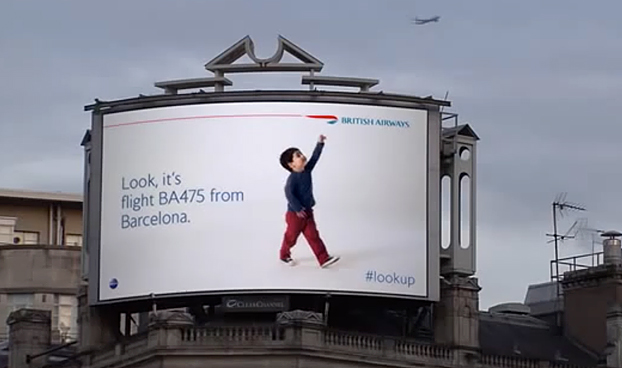
T.S. Eliot once said that the exploratory process often means a return to one’s beginnings. There are many examples of this, from the Internet of Things reinventing everyday household items as “smart devices” to Netflix reinventing the home-entertainment experience.
A current, prime example is the growing market of digital-out-of-home placement.
The digital-out-of-home (DOOH) market is a return to advertising’s roots, quietly shifting the industry by way of reimagining the classic advertising experience. Nearly $4.5 billion is expected to be spent on DOOH advertising in the U.S. by 2019, an increase of approximately $1.2 billion from 2016. Zenith forecasts that DOOH will grow faster globally than all other buying methods, and PricewaterhouseCoopers predicts that DOOH advertising revenues will overtake traditional media spend in 2020, growing at a rate of 15{69ae0a25d93a3bfb4c7a14c6cb5bc2b4db8e6111ae4c35307d8a6dded8443ab9} a year for the next four years.
Some may say DOOH is the next big thing … but really, it’s just an innovative return to advertising’s origins.
The DOOH market encapsulates everything from digital billboards to screens in elevators to screens on jukeboxes. What’s novel about DOOH is that, unlike internet or mobile advertising, it allows advertisers to reach target audiences in a specific, real-world context. Instead of interrupting an internet user’s online experience with an ad, it’s focused on marketing to consumers when they are “on the go” in public places or in transit. Because it’s location and context specific, the technology has the opportunity to give people the right message, in the right way, at the right time in a format that’s automated, dynamic and interactive.
Smart and relevant
DOOH’s, in its targeted messaging and ability to provide smarter, more relevant content to viewers encapsulates the original intent and thinking behind advertising: to engage with people and provide useful information to the public. Egyptians used papyrus to make sales messages and PSA’s; commercial art and political campaign displays have been found in the ruins of Pompeii. The point is, advertising was used to provide the public with important information that was relevant to them in the public arena.
In fact, DOOH has the opportunity to reach people in ways mobile and desktop advertising cannot.
DOOH’s impact can be measured based on the time a consumer is exposed to DOOH ads. According to PQ Media, digital out-of-home exposure is forecast to increase to 20 minutes on average per week in 2017. Improved signs, interactivity and innovations such a mobile couponing will increase both time spent and engagement with DOOH.
With real-time screens and live-data feeds, DOOH takes all the factors of context and place to cater to public interest. THIS maximizes engagement and improves the overall advertising experience. It also allows for unprecedented innovation and breakout creative campaigns.
Last year’s Jaguar’s #FeelWimbledon campaign used DOOH technology to deliver live match scores to the public. In 2014, British Airways engaged the public by using GPRS technology in its #Lookup campaign, in which a little boy on a billboard in Trafalgar Square looked up every time a BA plane flew over him. The conservation organization Space for Giants had a three-day DOOH campaign that featured a herd of digitally-generated 3D elephants marching across screens in three continents.
Suffice to say, the DOOH space presents a major opportunity for creatives, technologists and consumers alike. We see DOOH’s effectiveness in the numbers: the 2016 Nielsen OOH ad study found 91{69ae0a25d93a3bfb4c7a14c6cb5bc2b4db8e6111ae4c35307d8a6dded8443ab9} of U.S. residents age 16 or older, who have traveled in a vehicle in the past month, noticed some form of OOH, and 79{69ae0a25d93a3bfb4c7a14c6cb5bc2b4db8e6111ae4c35307d8a6dded8443ab9} noticed OOH in the past week. The same Nielsen digital billboards study found 71{69ae0a25d93a3bfb4c7a14c6cb5bc2b4db8e6111ae4c35307d8a6dded8443ab9} of digital billboard viewers find those ads to stand out more than online ads.
Ultimately, the emerging digital-out-of-home market is groundbreaking in its interactive technology, but it’s also a return to advertising’s roots and the original purpose around advertising: to provide an engaging and useful service to the public.
Read the original post at Adage.com
